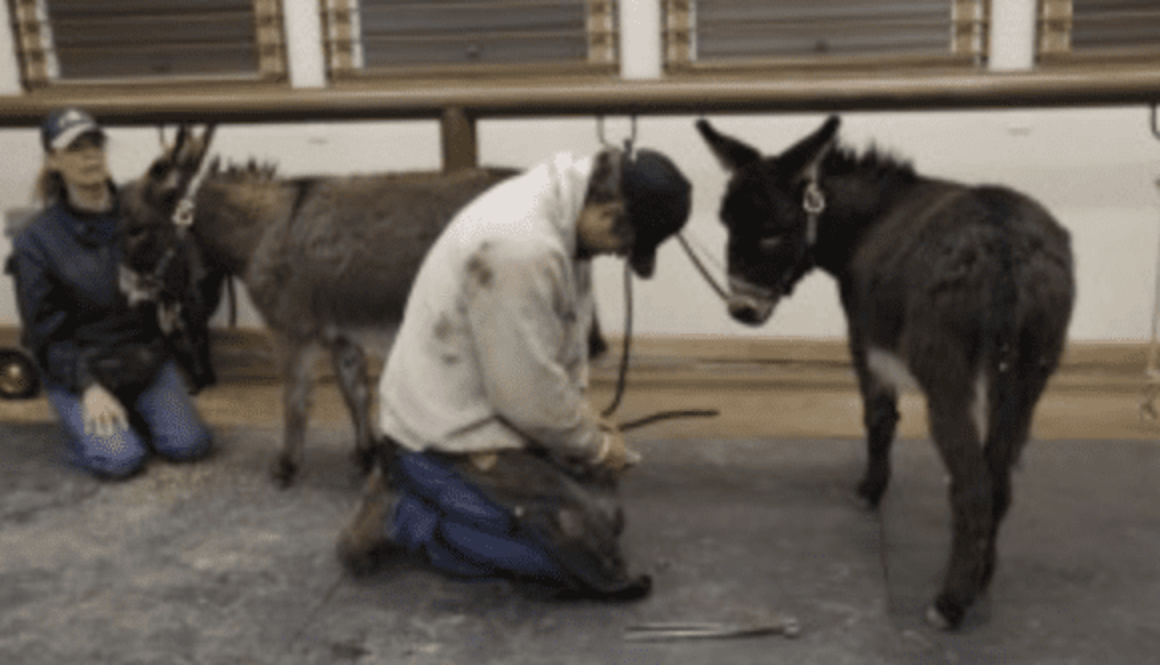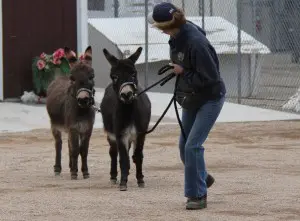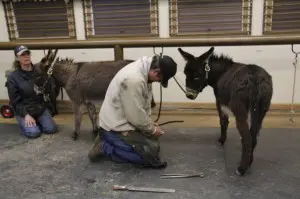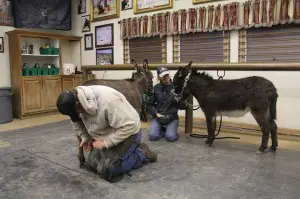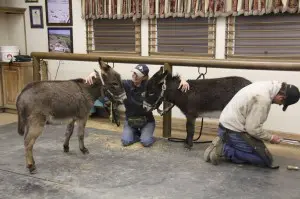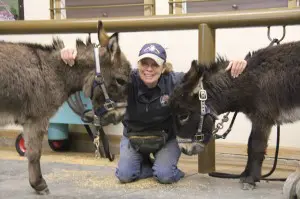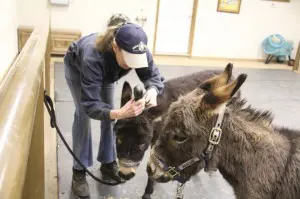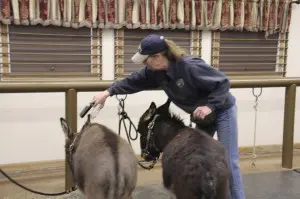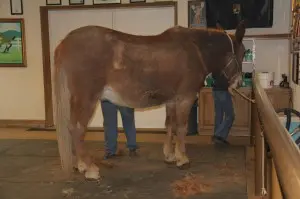Happy Hinnies!
This story comes from our friend, Luzma Osorio, of Criadero Villa Luz in Colombia. You may remember her previous posts about the mule mother on their ranch!

Very little has been written about Hinnies–most of the time it is unfavourable comments and myths due to lack of knowledge about them. Until now, very few people have bred Hinnies because of speculation about their size and behavior; they are said to be very small and difficult. Typically a breeder or a farmer may only have one Hinny and several mules; consequently his opinion is based on limited experience.
A Hinny is a domestic equine hybrid that is the offspring of a male horse and a female donkey. It is similar to the more common mule, which is the product of a female horse and a male donkey.
Most of the times Hinnies are the result of an accident, which is why they are less common than mules and there is a lack of information about them.

At our Stud Farm, Villa Luz, in Colombia, South America, we have been breeding mules and donkeys for more than fifteen years. There has been a big demand for our Paso Fino male donkeys (Jacks) to produce gaited mules through the years. But we were left with many female donkeys (Jennies), and nobody would buy them to produce mules even though they have the same good genetics and Paso Fino gait of their brothers. So we thought, let’s breed Hinnies–and the project began! This was twenty months ago.

First we selected twelve of our beautiful female donkeys (Jennies), 13 hands height average, with good womb and physical conformation. Then we needed a horse, so we bought a three and a half year old Paso Fino stallion and called him Romero. He is 14 hands. But it wasn’t easy; he didn’t like the Jennies to start with. This is normal, as horses prefer mares and donkeys prefer Jennies. But with much patience and after three hours waiting, Romero finally went for his first Jenny. Now he loves his harem of twelve, four of which have given birth to beautiful Hinnies and six are pregnant! So we expect to have at least ten Hinnies at the end of this year.
Hinnies are thought to be smaller because female donkeys are, for the most part, smaller than mares, but like mules, Hinnies come in many size–it depends on the size of their dam and also the sire.
Female donkeys range from miniatures to Mammoth Jennies that may be over 15 hands at the withers. At Villa Luz farm the Jennies are 13 hands average and the horse stallion is 14 hands so we are expecting the Hinnies to grow around 14 hands in height.

We now have four Hinnies, two females and two males: Romance, Romancera, Ronaldo and Rosarito. They are seven, six, five and four months old respectively. Their mothers had good deliveries without any problems.
The pregnancy time differed a little; Romance was born after 12 months, Romancera after 12 months 21 days, Ronaldo after 11 months 19 days and Rosarito after 12 months and 23 days. The pregnancies of Jennies are normally longer than mares.
We do the imprinting process as soon as they are born; it allows us to mould their personality and make them friendly and well-trained adult Hinnies!

It is said that Hinnies often have shorter ears, although they are still longer than those of horses, and more horse-like manes and tails than mules. Well, our Hinnies certainly have the ear shape of their sire–they are beautifully pointed at the top just like his, but bigger. Up until now the behavior and characteristics of our Hinnies don’t differ much from the mules, they are lovely animals. It is our goal to study Hinnies and help to understand them better.
The good news is, the Paso Fino gait has passed to the Hinnies! This gait is natural and we have seen it in our baby Hinnies shortly after birth! Paso Fino is a lateral gait, four beat footfall, which provides a constant, rhythmic cadence. The rider should not experience any bumping or jolting. They say you can carry a tray with a glass of champagne on a Paso Fino equine as they are so smooth!!
We don’t know if they got the Paso Fino gait from the sire or the dam because both have it, but we certainly will have Paso Fino Hinnies! Very smooth, intelligent and well behaved!



